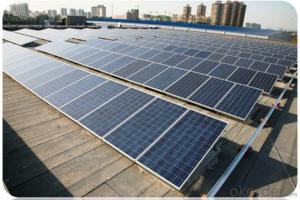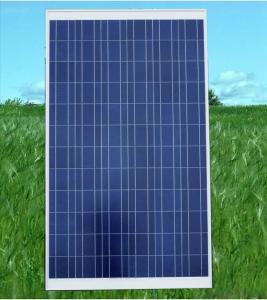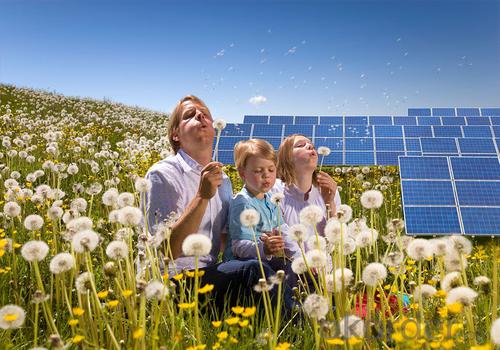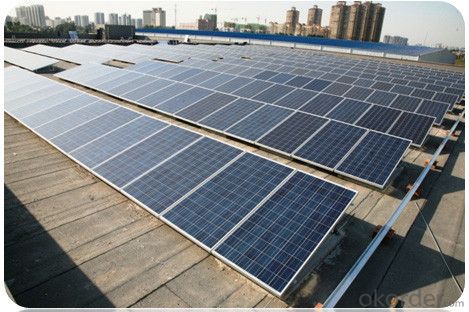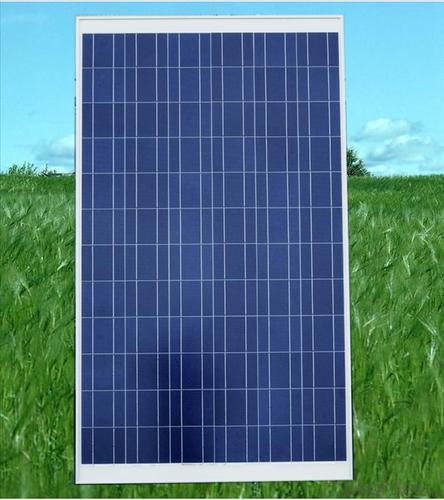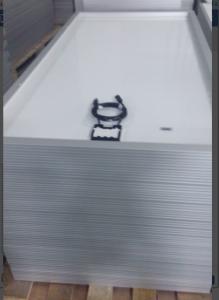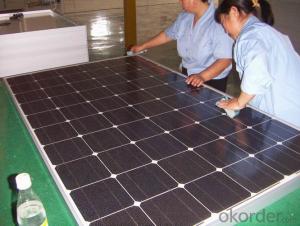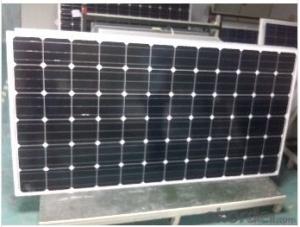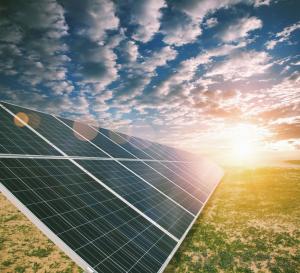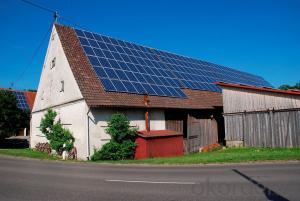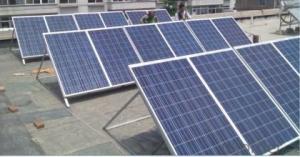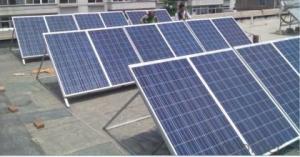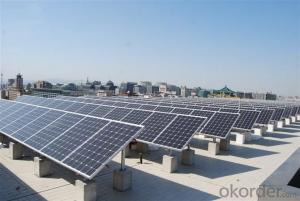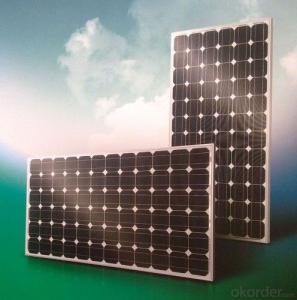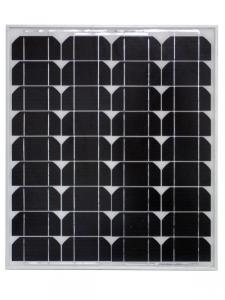Highest Wattage 310W Polycrystalline Silicon Solar Panels
- Loading Port:
- Ningbo
- Payment Terms:
- TT OR LC
- Min Order Qty:
- 200000 watt
- Supply Capability:
- 20000000 watt/month
OKorder Service Pledge
OKorder Financial Service
You Might Also Like
INTRODUCTION
This installation Manual contains essential information for the electrical and mechanical installation that your must know before installing CUSTOMER PV modules. This also contains safety information you need to be familiar with .All the information described in this manual are the intellectual property of CNBM and based on the technologies and experiences that have been acquired and accumulated in the long history of CUSTOMER. This document does not constitute a warranty, expressed or implied.
CUSTOMER does not assume responsibility and expressly disclaims liability for loss, damage, or expense arising out of in anyway connected with installation, operation, use or maintenance of the PV modules. No responsibility is assumed by CUSTOMER for any infringement of patents or other rights of third parties that may result from use of PV module.
CUSTOMER reserves the right to make changes to the product, specifications or installation manual without prior notice.
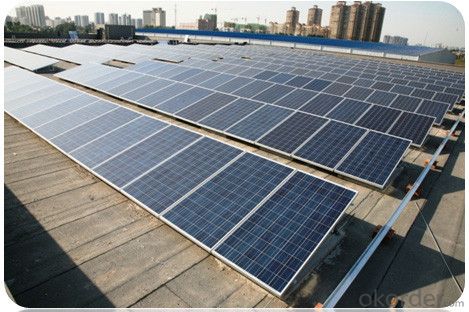
GENERAL INFORMATION
The installation of PV modules requires a great degree of skill and should only be performed by a qualified licensed professional, including licensed contractors and licensed electricians. Please be aware that there is a serious risk of various types of injury occurring during the installation including the risk of electric shock. All CUSTOMER modules are equipped with a permanently attached junction terminal box that will accept variety of wiring applications or with a special cable assembly for ease of installation, and they do not require assembly.
Data sheet
Maximum power | 310W |
Cell type(mm) | Polycrystalline solar cell 156*156 |
Number of cell(pcs) | 72(6*12) |
Manufacture site | China |
Open-circuit voltage(voc) | 45V |
Maximum power voltage(vmp) | 37V |
Short-circuit current(isc) | 8.8A |
Optimum operating current(imp) | 8.38A |
Power tolerance | 0~+5W |
Module efficiency | 16% |
Dimensions(mm) | 1956*992*40 |
Weight | 27 kg |
Backsheet | Silver |
Frame Colar | White |
Frame | Anodized Aluminum Alloy |
GENERAL WARNING
1. Before you attempt to install wire, operate and maintain the PV module, please make sure that you completely understand the information described in this installation manual.
2. Contact with electrically active parts of a PV module such as terminals can result in burns, sparks and lethal shock whether the PV modules is connected or not.
3. PV modules produce electricity when the sufficient sunlight or other sources illuminate the module surface. When the modules are connected in series, voltage id cumulative . When the modules are connected in parallel, current is cumulative. As a result, a large-scale PV system can produce high voltage and current which could present an increased hazard and may cause serious injury or death.
4. Do not connect the PV modules directly to the loads such as motor since the variation of the output power depending on the solar irradiation cause damage for the connected motor.
1:In the case of a blushless motor, the lock function becomes active and the hall IC is most likely to be damaged.
2:In the case of a brush type motor, the coil is most likely to be damaged.
- Q: I'm from Toledo, OH about 2 miles from the MI line. We are a foster family and have adopted 5 children. We just moved into a 5400+sq 2 story home. We have (3) 2.5-3 ton AC units to cool this huge house. We got the house cheap...$75k couldn't pass it up! Anyway...I was wondering how many solar panels it would take and of what wattage to power these Central Air Units and maybe the rest of the house. We have 3 people in our home......9 of which are children who leave the lights on and run hot water to beat the band. We have all brand new energy star appliances and front loader washer and dryer. Gas Range and Gas hot water tank. Was thinking of using metal window frames and buying solar cells and making my own panels. Just don't know how much to buy. We face south with no trees. Constant Sun. thanks for your help. An e-mail address to bounce questions off of would be helpful if you experienced. tx.
- With your load, the largest system on the page I reference above would not power your entire house, if all the AC units are running. However, how often does that really happen? You need to look at your utility bill and find your actual amoutn of KW hours of electricity used in a year and you hav enot told us that. The base price of top system quoted here without incentives is over $70,000. As you can see, the lions share of incentives is the utility company followed by federal. I have no idea if your local utility company offers incentives or not. You would have to resolve that with them. However, the federal incentives are still there even if your state and local utility has none. However, the price to you goes way up without all of these incentives. And your idea of using windows to mount solar cells is totally impractical. Yes, I know there are web sites that advertize just that, but it is total BS. The first word of advice to anyone looking to do this sort of thing is to FIRST have a complete energy audit done and then do whatever they say to conserve as much energy as possible, thereby reducing your need for solar power. Only then should you look at using solar to cover part of your load. We are a foster family and have adopted 5 children< WOW! I would like to thank you for what you do.
- Q: Can solar panels be used for powering a manufacturing facility?
- Yes, solar panels can be used to power a manufacturing facility. By harnessing the energy from the sun, solar panels can generate electricity that can be used to run various operations in a manufacturing facility, such as powering machinery, lighting, and other equipment. This can help reduce reliance on conventional electricity sources, lower operating costs, and contribute to a more sustainable and environmentally friendly business model.
- Q: I'm doing a project for school and I'm a little confused about energy and solar panels. I'm looking to propose installation of solar panels to power the computer lab at my school. From what I've read a computer and monitor use roughly 350 watts per hour. I was looking at solar panels and it says they produce various wattage. For example, I was looking at one rated at 200 watts. Does that mean 200 watts in a day? Or per hour? Please help.
- The rating of a solar panel is a maximum continuous rating. A 200 Watt panel will give a maximum of 200 watts under ideal conditions. A computer and monitor use about 400 Watts. not per hour - watts is Volts * Amps and a measure of Power. In hour a computer and monitor uses 400 Watt hours (Wh). Wh is a measure of Energy. To power a lab of 0 computers you will need 0* 400 = 4000 Watts. To run this from solar panels through the day only you would need a 4000 Watt panel. Except - its cloudy, the sun is in the wrong place - many factors reduce the output. To be reasonably safe you would need about a 2000 Watt panel. Then you would need batteries to store power through dull periods AND a voltage converter to change from low voltage DC from the solar panels to the mains voltage for your computers.
- Q: I know that the Solar panels store the power from the sun in the daytime, where does that stored energy go from there? Is it stored in the batteries? And how would you keep the batteries topped up if you had no Electric? by a generator? interested in solar panels for abroad, but need more info.
- Solar panels do not store power. Solar panels convert sunlight into electricity. To store power you need batteries. The usual type of batteries used are lead-acid deep discharge( similar to car batteries). The batteries are charged up during the time the sun is out. However, as a backup you could also have a generator handy to provide power for times when the sun did not shine enough to keep the batteries charged up.
- Q: Can solar panels be installed on the ground instead of a roof?
- Yes, solar panels can be installed on the ground instead of a roof. Ground-mounted solar panels are a popular alternative when roofs are not suitable or available for installation. Ground-mounted systems offer flexibility in terms of placement, orientation, and size, making them an excellent option for maximizing solar energy production.
- Q: Can solar panels be installed on museums or cultural centers?
- Yes, solar panels can be installed on museums or cultural centers. In fact, many museums and cultural centers are embracing solar energy as a sustainable and cost-effective solution for their energy needs. By installing solar panels, these institutions can reduce their carbon footprint, lower energy costs, and demonstrate their commitment to environmental stewardship. Additionally, the installation of solar panels on such iconic buildings can serve as a visual representation of their dedication to renewable energy, inspiring others to follow suit.
- Q: Our school is in the process of being built, but they have no plans to include any environmental benefits. I was wondering how to get a grant for solar panels (at least) or who I can talk to in order to get a grant.
- Excessively long payback schemes for solar panels are being quoted. It depends on where you live, where you situate your solar panels, what you buy and if you get a grant or install them yourself. Much of the cost of Solar panels is in the installation. Any competent DIY person can install a simple solar panel system. Ours cost less than ?000 to buy and self install. What are you calling payback time? Because each time I don't use fossil fuels and use solar energy instead, I don't get a 'fossil fuel' bill. Whilst we still use some electricity for running a fridge, lighting etc we have no other fuel bills, no gas, no oil, no electric heating no electrically heated hot water. We have woodburning stoves (which run on free wood) and solar. Remember you are not just paying for the electricity/gas/oil etc that you use, you are also paying standing charges, VAT etc. Include those in your 'payback time figures' and you will see a very different picture. How long would it take you to pay back ?,000 if you only had one tiny electric bill each quarter?
- Q: want to run 400 watt heater 8 hrs a day how many solar panels do i need and batteries
- You could do that, but it would be an expensive way to go. If what you really want is heat, consider heating water directly with conventional solar water heaters, and storing it in a large, insulated tank. You can then circulate the water through a conventional radiator at night.
- Q: How do solar panels withstand hail and other extreme weather conditions?
- Solar panels are designed to withstand various weather conditions, including hail and extreme weather. They are typically made with durable materials such as tempered glass, which is highly resistant to hail damage. Additionally, the panels undergo rigorous testing to ensure their ability to withstand high winds, snow loads, and extreme temperatures. The frames and mounting systems used to secure the panels also contribute to their resilience against severe weather. Overall, solar panels are built to be robust and reliable, enabling them to endure hail and other extreme weather conditions.
- Q: I can't figure out how to charge a Ni Cd (BD 8V Firestorm) battery directly with a solar panel so I've come up with an alternative which might or might not work. I thought I would connect an inverter (I found a nice 400W for $30) to my trucks battery and plug the BD Firestorm battery charger into the inverter. Then I was thinking I could use a 5W solar panel to trickle charge the truck battery and keep it connected after the Ni Cd is charged to ensure the truck battery is topped off. The truck would not be running during this process. Will this solution work? Is there a better solution?
- Two of those solar panels connected in series will easily charge a 8V battery. I would not even be concerned about over voltage the solar cells will have plenty of internal resistance.
Send your message to us
Highest Wattage 310W Polycrystalline Silicon Solar Panels
- Loading Port:
- Ningbo
- Payment Terms:
- TT OR LC
- Min Order Qty:
- 200000 watt
- Supply Capability:
- 20000000 watt/month
OKorder Service Pledge
OKorder Financial Service
Similar products
Hot products
Hot Searches
Related keywords

